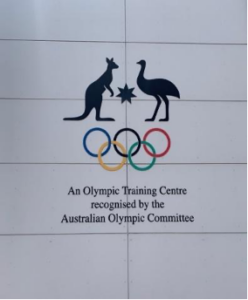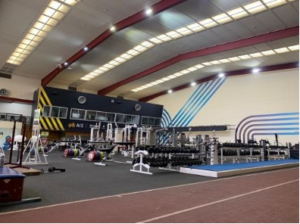Author: Jennifer Meier
Insights from a two-week work student work experience
“The only source of knowledge is experience” (Albert Einstein).
Alright… Maybe not the only one, but it certainly plays a major role in life and thus in Sport and Exercise Medicine (SEM). As I was curious to see how Sports and Exercise Medicine is practised beyond the Swiss border, I decided to spend a part of my internship in Australia. Thanks to the Swiss Junior SEMS mentoring program, I was able to make use of my mentor’s international connections, giving me the opportunity to spend 2 weeks at the Australian Institute of Sport (AIS) in Canberra.
Canberra is a man-made city, completely geometrically planned and built around Lake Burley Griffin. Most of the tourist attractions are located along the lake side and numerous cycling paths and bushwalking trails can be found in the surrounding “mountains”, which are more like hills from a Swiss perspective.
The AIS is located about 10 minutes from the city centre and covers an area of 65 hectares.

On my first day at the medical clinic, I was warmly welcomed by Emily Partridge, the special medical projects advisor, who took me for a tour around the entire campus. I was impressed by the size of the campus with all its amenities ranging from medical rooms, physiology testing facilities to biotech areas and the recovery centre. The AIS is the national base for Australia’s basketball, volleyball and men’s gymnastics team, as well as the NBA global academy. Furthermore, it is recognised as a paralympic base for swimming and track and field athletes.

The AIS is recognised as an Olympic and Paralympic Training Centre
Back at the clinic, I had the honour of meeting the Chief Medical Officer (CMO) of the AIS, Dr. David Hughes. He is one of the 6 doctors working at the AIS. With over 30 years’ experience in SEM (including CMO at the Rio and Tokyo Olympics), he is responsible for all medically treated matters on the campus as well as all externally facing projects (e.g. policy work). The majority of clinical activities with athletes is managed by Dr. Richard Saw (AIS Lead Physician), two SEM registrars and two part-time working physicians. Their main task is to provide high-quality sport medicine service to athletes and coaches who use the AIS Canberra campus as well as the European Training Centre (ETC) in Varese (IT) during the European summer.
During my stay in Canberra, I got an insight of the whole spectrum that belongs to high performance sports medicine. Not a single day was the same. Activities ranging from shadowing doctor’s consultations, to hands on sessions with the physios, to guided tours around the sport physiology labs let the days go by like a flash. Every one of the team was keen to share their knowledge and always had an open ear for my questions, something I really appreciated. Through that I have learnt what I means to be professional (para)athlete and what is needed for high performance results in elite sports. Moreover, I got the opportunity to learn how the state-of-the-art technologies are implemented in the daily training routine and what conclusions can be drawn from these metrics.

Strength and Conditioning Hall
One of the most inspiring meetings I took part of, was the weekly volleyball meeting involving coaches, doctors, physios, strength and conditioning coaches, nutritionists and the recovery physiologist. All athletes of the team were briefly discussed, with the aim of bringing all parties up to date on the physical condition of each athlete and thus promote their long-term health and well-being.
I was overall inspired by their multidisciplinary collaborative team approach and daily pursuit to provide best care for the athletes with joy and dedication. I leave Canberra with lots of good memories and inspiration on how a holistic patient care can and should look like, as well as what we as future doctors should aim for.
